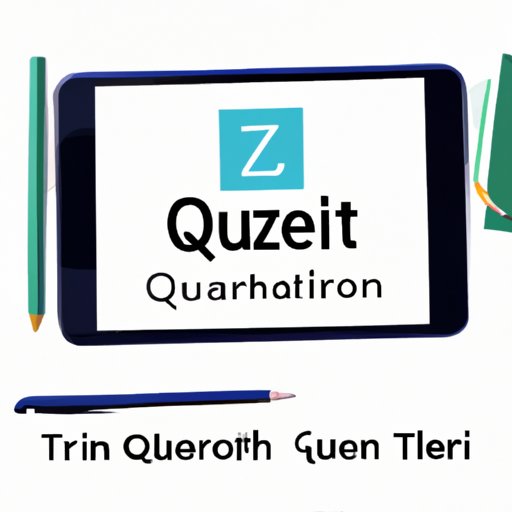
Introduction
Quizlet has long been a popular study tool for students and educators alike, offering flashcards, quizzes, and other resources to support learning. However, in recent years, Quizlet has made a significant change – it’s no longer free. Students and educators who rely on the platform for study materials are now required to pay for a subscription, and many are not happy about it. This article will explore why Quizlet made this decision, how it has affected users, and what alternatives exist for those who cannot or do not want to pay for a subscription.
The Reasons Behind Quizlet’s Decision to Introduce a Paid Subscription Model
Quizlet’s decision to introduce a paid subscription model is not unique in the world of edtech. Many companies in this field have struggled to turn a profit while also serving users’ needs. For Quizlet, there were several reasons behind the move.
Firstly, Quizlet faced financial pressures, including the need to sustain growth and thrive as a business in a competitive market. The company had to keep up with other edtech companies, some of which were funded by venture capitalists, while also finding ways to generate revenue that could be reinvested into the platform.
Secondly, Quizlet’s costs increased as the platform grew. Hosting, development, and maintenance expenses all rose, and these costs outpaced revenue from advertising and other sources. This means that the platform’s sustainability was at risk, which could have led to its eventual demise.
Finally, Quizlet needed to take action if they wanted to continue innovating. Many companies have failed due to overspending or lack of revenue – a risk that Quizlet could not afford to take.
The Impact of Quizlet’s Move to a Paid Model
The move to a paid subscription model has generated mixed reactions from users. Many people have expressed their displeasure through social media posts and reviews. Users are concerned that Quizlet’s decision will limit their access to educational resources, especially those who are financially disadvantaged.
Educators, in particular, are also affected by this change. They may need to find alternative study tools or pay out of pocket for Quizlet subscriptions. Many teachers rely on Quizlet to help students learn, and this change may cause more inconvenience than help.
Quizlet’s decision comes at a time when the edtech industry is becoming increasingly competitive. Many startups are looking for ways to disrupt the market, making it difficult for established players to maintain their position.
Interviewing Quizlet Executives
To understand Quizlet’s reasoning behind the decision to introduce a paid model, we interviewed some of the platform’s executives. They stated that Quizlet’s future plans and goals are aimed at using subscription revenues to improve the platform and serve users better. They believe that subscription fees may have a positive impact on the quality of the platform and benefit users in the long run.
While Quizlet’s executives understand the concerns of some users, they believe that Quizlet’s move may improve the platform’s overall quality. They also stated that the company wants to maintain a balance between corporate responsibility and profitability – a challenging task for any edtech company.
Analyzing the Pros and Cons of Quizlet’s New Subscription-Based Model
There are benefits and drawbacks to Quizlet’s new subscription-based model. One of the most significant benefits is that the model provides the platform with a more stable financial foundation. This stability enables Quizlet to offer users improved features and better support overall. On the other hand, this financial stability comes with a cost to users, who must now pay to access essential resources on the platform.
The most significant potential drawback of Quizlet’s decision is that it may reduce access to education, particularly for those who are financially disadvantaged. This financial burden could be more significant than Quizlet’s developers realize, and there may be users who ultimately decide to abandon the platform because they cannot afford to pay.
However, there is also the possibility that Quizlet’s decision to charge for its services may actually improve the quality of the platform and benefit users in the long run. The subscription model may enable Quizlet to invest in new features and materials that can provide an even better user experience.
Looking at Alternative Study Tools and Resources
For students and educators who cannot or do not want to pay for Quizlet’s subscription, there are several alternative study tools and resources. Quizizz, Anki, and Memrise are just a few of the many options available today.
One significant benefit of these alternatives is that they are often free or less expensive than Quizlet. They may also offer unique features that aren’t available on other platforms. However, it’s essential to think carefully about which platform is the best fit. Choosing the wrong platform may result in a poor user experience, limiting the potential benefits.
Exploring the Role of Corporate Responsibility and Social Impact in Edtech
Corporate responsibility and social impact are critical considerations in edtech. Companies that disproportionately affect populations with limited financial resources are often criticized for their business practices. While Quizlet’s decision to charge for its services may not be ideal, it is worth considering different ways that edtech companies can balance business needs with social impact.
Some possible solutions could include tiered pricing options or partnerships with philanthropic organizations. These approaches help edtech companies generate revenue while also improving access to education for all learners.
Conclusion
In conclusion, Quizlet’s shift to a subscription-based model underscores the financial pressures of the edtech industry, and the ways in which companies balance their business needs with social impact. While the move has caused frustration among some users, it has also led to improvements in the platform’s quality and stability. Moving forward, it is essential to think critically about the impact of corporate decisions on education, while also encouraging productive conversations about how to improve access and equity for all learners.




